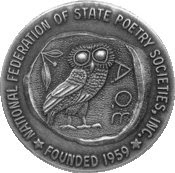THE UNFOLD PINNACLE by Basanta Kumar Kar
– A review by Nabina Das
Basanta Kumar Kar’s involvement in the Indian nonprofit sector for years has afforded him a close-up of tribal societies, backward classes and marginalized sections of India's developing and diverse society. He writes with flourish in first-person voices of personas as varied as an under-aged girl with a history of abuse to a Gond or Maria tribal woman struggling against the onslaught of modern civilization to a mother-cum-sex worker reflecting on her fate in the ruthless city. As a professional in his poetic role, Kar brings alive the disillusionment and haplessness of India’s marginalized women, especially those from Scheduled Castes (SC) and Scheduled Tribes (ST). While involving himself in his subject’s plight he remains a keen observer. Kar shares the wealth of his experiences with his readers in the rather long unpublished 73-page collection.
Wikipedia defines the SC/ST as ‘Indian population groupings that are explicitly recognized by the Constitution of India, previously called the "depressed classes" by the British, and otherwise known as untouchables. SCs/STs together comprise over 24% of India's population, with SC at over 16% and ST over 8% as per the 2001 census… Some Scheduled Castes in India are also known as Dalits. Some Scheduled Tribe people are also referred to as Adivasis. Commenting on the crisis of faith people from these underprivileged communities experience, in the aptly titled “Faith First”,
Kar writes:
Smoke and cloud work in tandem
swings of snow peep
hills draw lines, mesmerize
they butcher;
The actions embodied by the elements smoke, cloud, snow, hills etc. are swift and brutal, akin to the experience of his subject. Nature provides no succor. It is a constant reminder of bad fortune. In “…mesmerize/they butcher” this is particularly amplified. The short staccato sentences metaphorically and literally “work in tandem”. The cosmogony of the women Kar writes about, socially denied and deprived, and often under a double yoke of social stigma within their own communities, is comprised of humanistic elements that surprise us with their animateness, the only source of comfort for the subjugated lot:
I understand my neighbours
tamarind tree, dates and nuts
pigs and chicken, ghosts and spirits
traditional healers.
The weltanschauung of the women is stark yet conveys the environment they thrive in:
We are together
no one more equal than others.
Kar’s writing style is abrupt and rhetorical for the most part, characteristic of his subject’s emotional graph:
The flower fades
the bird escapes the cage
I ponder over the lineage
but to yet another cruel destiny.
“Border I” – where Kar’s palette proffers a touch of hope for the voice of an ‘other backward caste’ widow from the state of Chhattisgarh in eastern India – is a delightful study in astuteness. The lilting tones of “The fading barks almost ochre” escalates the almost ochre-ness of the still life reflected in the river as if a frame of decay and degeneration. Kar repeats the water/river motif to encompass the broad expanse of the subject’s silence and depth of agony in “The silent river Tel”. For the widow, “festive is the air for all else” in her village bordering the eastern state of Orissa. And Kar’s prophetic yet passive observation that “the scheme unfolds at pinnacle” tells of a subtext of events and actions that this particular festive moment encapsulates. Rather than celebration, all that the subject takes recourse to is complete surrender to her destiny. In the festive scenario, the only activity she is entitled to is “to bring smoke before the sunset”.
Kar’s poetry is often marked by chopped rhymes and a frequent absence of article usage. In effect this highlights the speech pattern of his poetic subjects, most of whom we realize to be without any worldly pedigree. Although it may surprise and annoy a stickler for English grammar -- Kar follows the British spelling system followed in India – the parole brings alive the shared linguistic ethnography of the Chhattisgarh-Orissa-Andhra Pradesh state cluster, the rawness of forest and village life, and the customs of the people ensconced there. Kar’s style at times, however, becomes overbearing in his earnestness to communicate his subjects’ travails. Many expressions become repetitive. The elements of his environment, the ecology and ethnography of it, is often enmeshed in commonplace poetic metaphors. Also, trying to highlight only the pain and subjugation of single mothers, the abused, the widowed, and the institutionally sidelined among the backward caste and Adivasi women in this passionate collection Kar calls ‘verse for a cause’, his poetry rarely offers any tonal variation.
The world of “The Unfold Pinnacle” also has moments away from the oppressing villages and the tribal regions. Life has not heralded better times for a twenty-two year old Bedia girl even in the urban setting of the city of Mumbai in Maharashtra state. A bar girl now, a shade different from her ancestral profession, her plaintive tone in “Bosom” (Alluring Bombay bar seduces/in a panoramic green room/from a late night to dawn) unfolds the pinnacle where misfortune spews.
NABINA DAS is a poet and fiction writer dividing her existence between the US and India. She has been widely published in North America and India and freelances and blogs at www.fleuve-so
 uterrain.blogspot.com
uterrain.blogspot.com
























